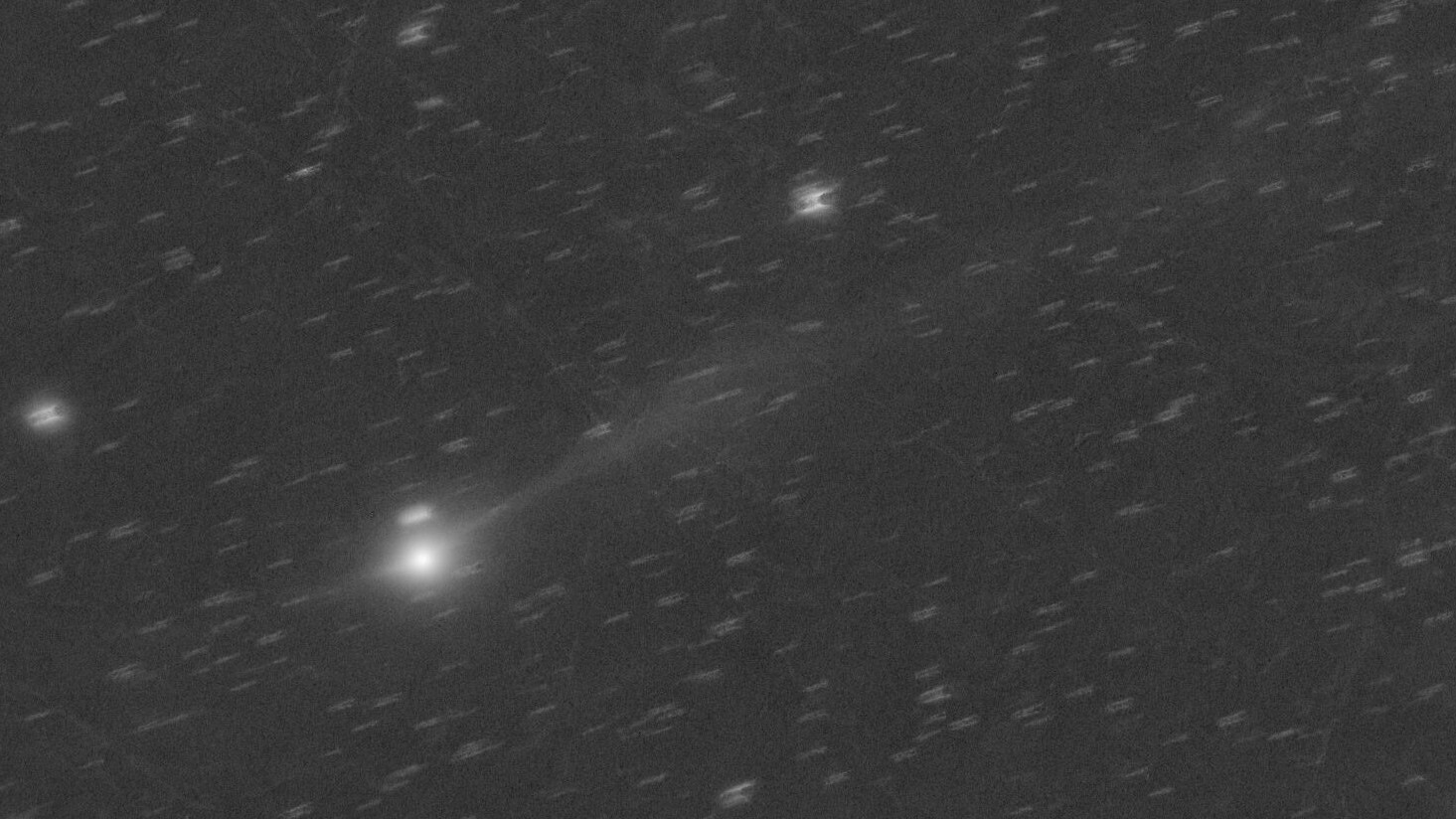No, comet 3I/ATLAS hasn't exploded — and no, that doesn't mean it's an alien spaceship
Comet 3I/ATLAS appears to be normal and intact, despite some reports that the interstellar visitor exploded after its brush with the sun.

Comet 3I/ATLAS lovers don't despair: Our favourite interstellar visitor most likely didn’t just explode, an expert says after examining the latest observations.
Yesterday (Nov. 10), Futurism reported that comet 3I/ATLAS may have broken into pieces after re-emerging from behind the far side of the sun. The science and technology website quoted the blog of Harvard University astrophysicist Avi Loeb, who calculated that the comet lost a lot of mass based on a 3I/ATLAS image captured by two small telescopes in Spain on Sunday (Nov 9).
However, Loeb's assessments of 3I/ATLAS have come under increased scrutiny in recent days. He was once again using his blog to speculate that the comet could be an alien spaceship. Yet most researchers are confident it's a natural object, and that it hasn’t, as a matter of fact, exploded.
"All the images I've seen show a fairly ordinary/healthy-looking comet," Qicheng Zhang, a postdoctoral fellow at the Lowell Observatory in Arizona who has been studying the comet, told Live Science in an email. "There's no sign at all that the nucleus broke apart."
Comet 3I/ATLAS recently disappeared (briefly) behind the sun, reaching its closest point to our star, known as perihelion, on Thursday (Oct. 29). As it reemerges, astronomers are eagerly watching it to learn more about its makeup. That’s because comets heat up as they fly closer to stars, causing ice on their surface to sublimate into gas which researchers can then detect and study.
That newly unleashed gas can burst through the comet’s surface in gargantuan jets, wrap around the comet’s body in a cloud called a coma, or be swept away into the comet’s long tail. All of these features are made brighter by the sun’s ionizing radiation, allowing even amateur astronomers to study the comet under the right conditions.
From Earth's perspective, the comet is currently rising higher and higher above the eastern horizon and, with the right conditions, is visible through a small telescope (6-inch lens) in much of the Northern Hemisphere.
Get the world’s most fascinating discoveries delivered straight to your inbox.
And everyone is sure to be looking. Comet 3I/ATLAS has become a lightning rod of celestial speculation since its discovery in July, with Loeb and others suggesting that the comet — an interstellar visitor from beyond our solar system that’s thought to be more than 7 billion years old — might be an alien probe.
Yet most astronomers are confident that the interstellar visitor is a natural comet from an unknown star system in the Milky Way. The comet’s natural origins should be cause for excitement, not disappointment: 3I/ATLAS is only the third interstellar comet ever recorded, is the most massive of its kind, and potentially the oldest comet ever seen.
In an image taken by amateur astronomers Michael Buechner and Frank Niebling on Sunday (Nov. 9), jets appear to be shooting off the comet. This led Loeb to use an estimate of the amount of jetted material and the comet's corresponding mass to claim that it would have needed a much larger surface area than has been observed if it were a natural object.
Loeb's assessment also claimed that the comet should have broken up into at least 16 pieces — so if astronomers find that it hasn't broken up in upcoming observations, Loeb thinks scientists will have to consider that it isn't a natural comet.
To put it lightly, astronomers disagree.
"I checked Avi Loeb's blog, and it sounds like he's just built a house of cards on top of his unfounded claim about the comet's acceleration, which was an egregious misinterpretation of the comet's orbital parameters anyone who's ever computed any comet's orbit will immediately recognize as faulty," Zhang said.
Before his latest post, Loeb’s claims were already drawing strong criticisms from astronomers. On Sunday, Jason T Wright, a professor of astronomy and astrophysics at Penn State University, wrote in his blog that there weren't any indications that 3I/ATLAS was an alien spacecraft, breaking down ten of Loeb’s claims about unnatural “anomalies” point by point. He also questioned Loeb's expertise and criticised his posts and papers.
"In these papers and on his blog he regularly betrays an unfamiliarity with well-established planetary science concepts and misinterprets papers and comes to erroneous conclusions," Wright wrote.
3I/ATLAS will make its closest approach to Earth on Dec. 19. Until then, expect many more new observations and claims — just take them with a grain of salt.

Patrick Pester is the trending news writer at Live Science. His work has appeared on other science websites, such as BBC Science Focus and Scientific American. Patrick retrained as a journalist after spending his early career working in zoos and wildlife conservation. He was awarded the Master's Excellence Scholarship to study at Cardiff University where he completed a master's degree in international journalism. He also has a second master's degree in biodiversity, evolution and conservation in action from Middlesex University London. When he isn't writing news, Patrick investigates the sale of human remains.
You must confirm your public display name before commenting
Please logout and then login again, you will then be prompted to enter your display name.
